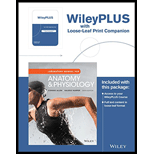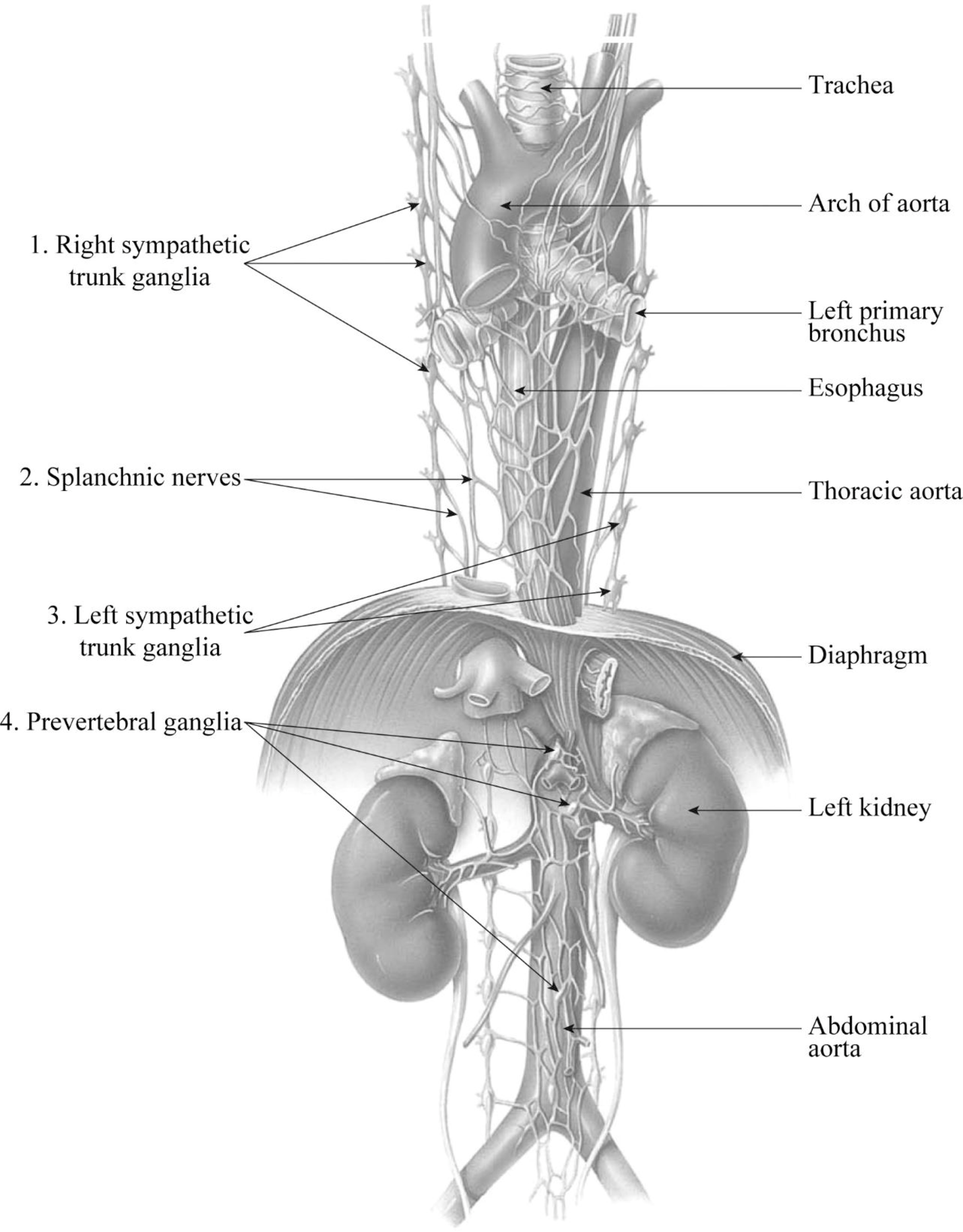
Concept explainers
To label: The structures of the sympathetic motor ganglia and nerves.
Introduction: The autonomic nervous system is a functional division of the peripheral nervous system. It is structurally and functionally divided into two parts, namely, the sympathetic nervous system (SNS) and the parasympathetic nervous system (PSNS).
Answer to Problem 1.1BGL
Pictorial representation: The structures of the sympathetic motor ganglia and nerves in the fig.1.

Fig1: Sympathetic motor ganglia and nerves
Explanation of Solution
1. Right sympathetic trunk ganglia: The sympathetic trunk ganglia are a paired bundle of nerve fibres that run from the base of the skull to the coccyx and lie parallel to the spinal cord. They are also known as paravertebral ganglia.
2. Splanchnic nerves: The splanchnic nerves are paired visceral nerves that carry fibres of the autonomic nervous system as well as sensory fibres from the organs.
3. Left sympathetic trunk ganglia: The left sympathetic trunk ganglia are one of the pair of the trunk ganglia that lie parallel to the spinal cord. Postganglionic neurons from these ganglia innervate the organs that are superior to the diaphragm.
4. Prevertebral ganglia: The prevertebral or collateral ganglia are formed of celiac, superior mesenteric and inferior mesenteric ganglia. They lie anterior to the abdominal aorta and their postganglionic neurons innervate the organs inferior to the diaphragm.
Want to see more full solutions like this?
Chapter 22 Solutions
Laboratory Manual for Anatomy and Physiology, 6e Loose-Leaf Print Companion
 Human Anatomy & Physiology (11th Edition)BiologyISBN:9780134580999Author:Elaine N. Marieb, Katja N. HoehnPublisher:PEARSON
Human Anatomy & Physiology (11th Edition)BiologyISBN:9780134580999Author:Elaine N. Marieb, Katja N. HoehnPublisher:PEARSON Biology 2eBiologyISBN:9781947172517Author:Matthew Douglas, Jung Choi, Mary Ann ClarkPublisher:OpenStax
Biology 2eBiologyISBN:9781947172517Author:Matthew Douglas, Jung Choi, Mary Ann ClarkPublisher:OpenStax Anatomy & PhysiologyBiologyISBN:9781259398629Author:McKinley, Michael P., O'loughlin, Valerie Dean, Bidle, Theresa StouterPublisher:Mcgraw Hill Education,
Anatomy & PhysiologyBiologyISBN:9781259398629Author:McKinley, Michael P., O'loughlin, Valerie Dean, Bidle, Theresa StouterPublisher:Mcgraw Hill Education, Molecular Biology of the Cell (Sixth Edition)BiologyISBN:9780815344322Author:Bruce Alberts, Alexander D. Johnson, Julian Lewis, David Morgan, Martin Raff, Keith Roberts, Peter WalterPublisher:W. W. Norton & Company
Molecular Biology of the Cell (Sixth Edition)BiologyISBN:9780815344322Author:Bruce Alberts, Alexander D. Johnson, Julian Lewis, David Morgan, Martin Raff, Keith Roberts, Peter WalterPublisher:W. W. Norton & Company Laboratory Manual For Human Anatomy & PhysiologyBiologyISBN:9781260159363Author:Martin, Terry R., Prentice-craver, CynthiaPublisher:McGraw-Hill Publishing Co.
Laboratory Manual For Human Anatomy & PhysiologyBiologyISBN:9781260159363Author:Martin, Terry R., Prentice-craver, CynthiaPublisher:McGraw-Hill Publishing Co. Inquiry Into Life (16th Edition)BiologyISBN:9781260231700Author:Sylvia S. Mader, Michael WindelspechtPublisher:McGraw Hill Education
Inquiry Into Life (16th Edition)BiologyISBN:9781260231700Author:Sylvia S. Mader, Michael WindelspechtPublisher:McGraw Hill Education





